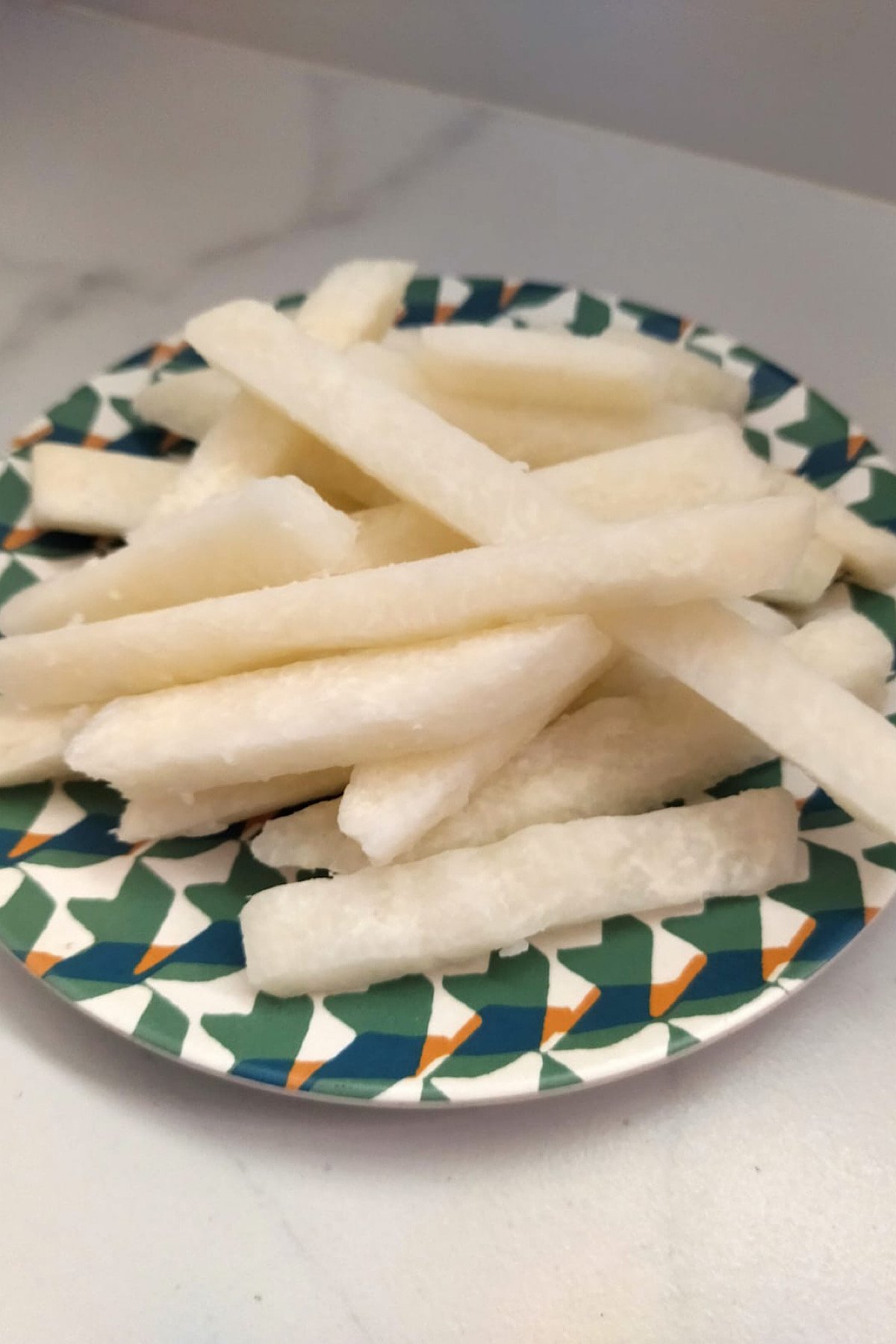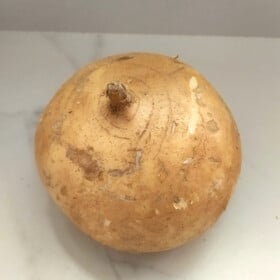This popular South American root vegetable has a light, nutty sweetness and a satisfying crunch that sticks around even after you cook it. Cooked or raw, jicama makes a great addition to any kitchen.

Is Jicama a Vegetable or a Fruit?
Jicama is a root vegetable that’s sometimes referred to as the Mexican turnip. The edible part of the plant grows under the ground. You’ll see it used in both sweet and savory dishes, but because it comes from the root of the plant, it’s much more accurate to call it a vegetable than a fruit.
What Does Jicama Taste Like?
Jicama looks and feels like a potato after you peel it, but that doesn’t mean it tastes like one. The pale insides of the root actually taste more like a milder version of an apple. It tastes sweet and slightly nutty, and the texture is crisp, also similar to an apple. Some compare its flavor to a mix between a potato and a pear, while others say it tastes similar to a water chestnut.

Do You Have to Peel It?
The skin of the jicama root is toxic, so you definitely want to remove all traces of the peel before you try to eat it. You’ll want to use a chef’s knife or paring knife to get the skin off instead of a peeler. This more precise tool makes peeling the rough, bark-like skin easier, and helps to ensure you don’t miss any small pieces of the skin.
Can Jicama Be Cooked?
Although it’s most commonly eaten raw, there are plenty of different ways to cook jicama. You can steam it, boil it, bake it, sauté it or fry it. When cooked properly, it keeps its crisp snap and apple-like texture.

Where to Find Jicama
Jicama can be hard to find at grocery stores in the US. It’s much more common in Latin America and Asia, so check out any markets in your area that sell products from any of the countries in those regions. You can also buy jicama online, which works particularly well with this root vegetable because of its long shelf life before peeling.
Storage Instructions
Before cutting or peeling it, go ahead and keep jicama in the pantry or another cool, dry place for up to 3 weeks. But once you break the skin, make sure to wrap it tightly in plastic and move it to the fridge, where it can stay for up to 5 more days. A squeeze of lemon juice can help to keep pre-cut jicama tasting fresh after a few days in the fridge.
Want to save this recipe?

Tasty Ways to Use Jicama
There are plenty of ways to put this versatile root vegetable to good use in the kitchen. Here are some ideas to get you started.
Use It in a Salad
One of the most common ways to enjoy jicama is by tossing it in a salad. It pairs well with red pepper and cucumber, or you can use it as a replacement in recipes that call for apples, like this Creamy Waldorf Salad.
Stir-Fry It
Jicama makes a great addition to sweet stir fries like this Teriyaki Shrimp Stir Fry. Just chop it up and add it a little bit after the peppers so that it keeps its slight crunch.
Add It to a Roast
If you’re making roast potatoes, roast vegetables or an oven-roasted meat dish, try throwing in some jicama sticks. You can even use them to replace the apples in something like Spiced Pork Tenderloin with Sautéed Apples.
Jicama Chips
To make chips with this root vegetable, cut the root into thin coin-shaped slices. You can brine them in salt and vinegar or season them with lime juice, salt and chili powder. Pop them in the oven at high heat until they crisp up and enjoy!
Jicama Fries
Baked jicama fries have a sweetness and a slight crunch to them, making them a fun and interesting replacement for French fries. You can season them with things like garlic powder, onion powder and paprika.
Post may contain affiliate links. Read my disclosure policy.


